CASE 1
A case of full jaw reconstruction
Before treatment
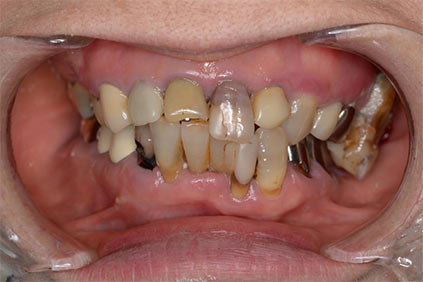
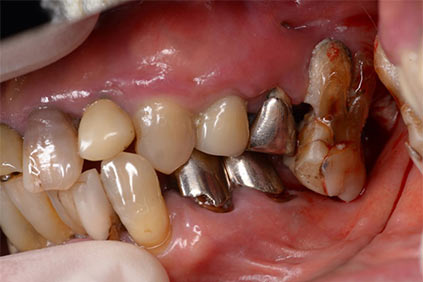
A woman in her 70s. Periodontal disease, tooth loss, and root fracture had caused occlusal collapse.
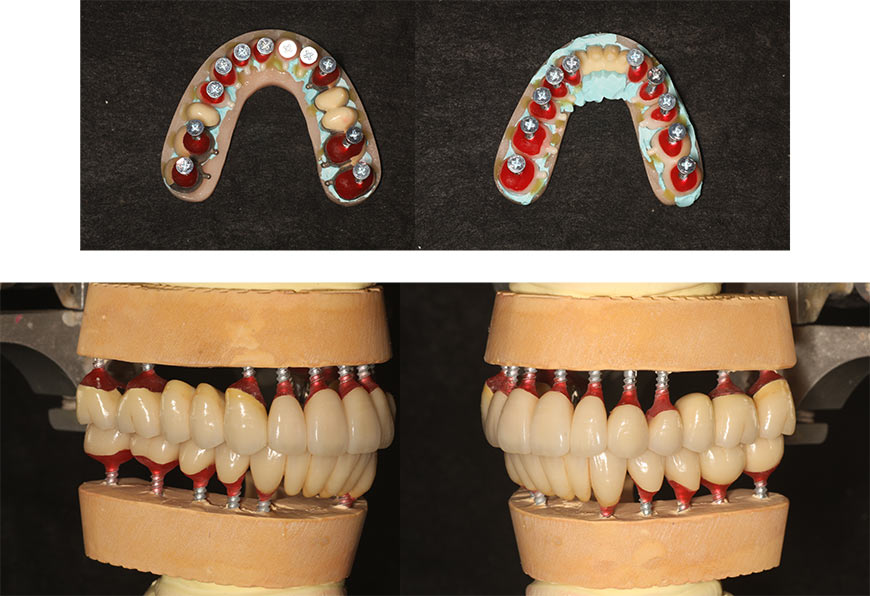
This is the final stage of the technical work. Precise laboratory work is essential to reconstruct the overall bite.
After treatment
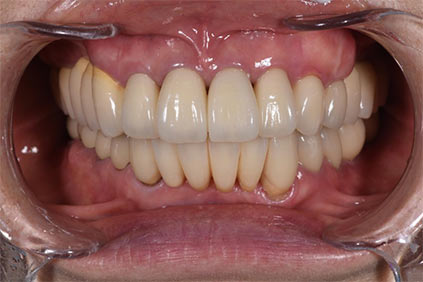
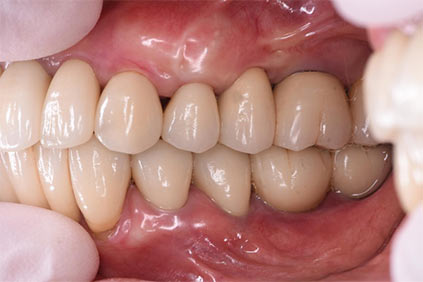
The remaining teeth were treated for tooth decay and periodontal disease (periodontal tissue regeneration therapy), and the missing teeth were restored with implants. (Treatment period: 2 years)
CASE 2
A case of full-maxillary treatment combined with orthodontic treatment (mouthpiece treatment)
Before treatment
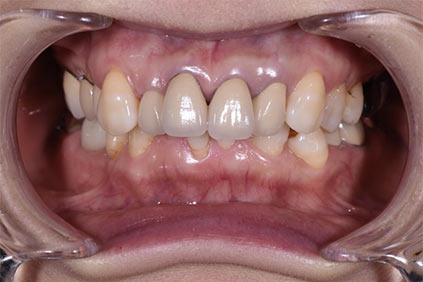
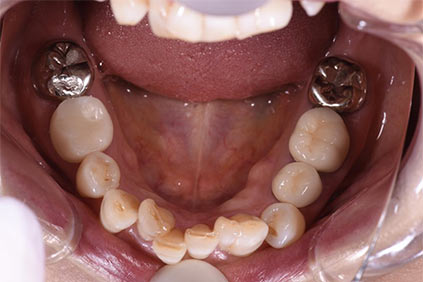
Female in her 50s. Her dentition was noticeably crowded (rattling), and none of her front ceramic teeth had nerves. It would be complicated to deal with a broken tooth in the future.
After treatment
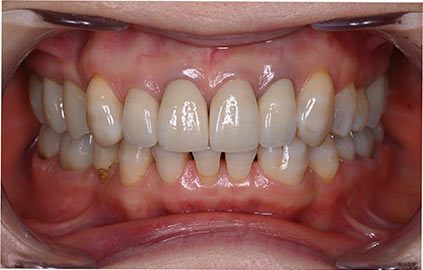
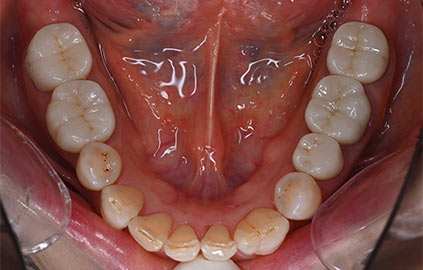
After orthodontic treatment with Invisalign (mouthpiece orthodontics), ceramic restorations were performed on the restored dentition (treatment period: 1.5 years). (Treatment period: 1.5 years)
CASE 3
A case of full-maxillary treatment combining orthodontic treatment (mouthpiece treatment)
Before treatment
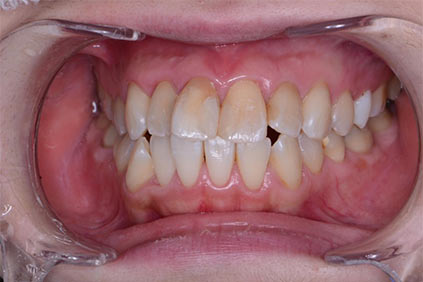
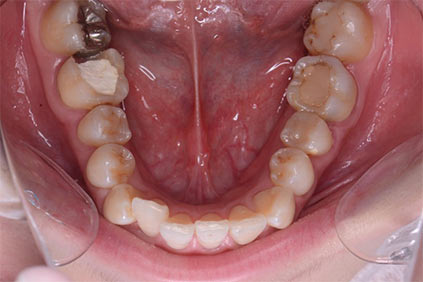
Female in her 30s. She was concerned about the discoloration of her front teeth, which had no nerves, as well as the plexus (rattling dentition). Overall tooth decay was also noticeable due to interruption of treatment.
After orthodontic treatment
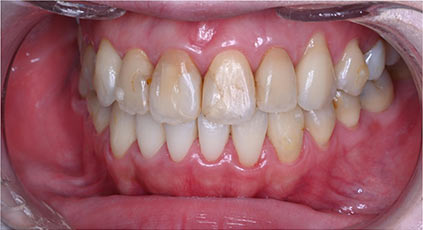
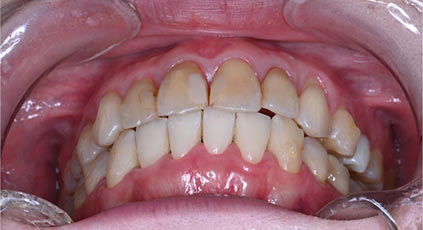
After basic treatment (treatment of cavities and root disinfection), the patient was corrected with Invisalign mouthpiece orthodontics. Up to this point, the discoloration of the teeth is still present.
Ceramic treatment after whitening
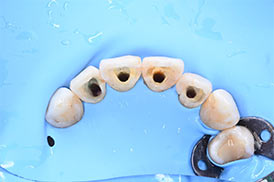

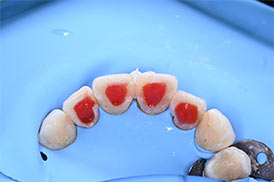

Whitening was performed in order to place ceramics beautifully without cutting down.
Then, laminate veneers (a method of bonding shell-shaped ceramics) were applied to the front teeth.
CASE 4
A case of partial treatment combined with orthodontic treatment (in house mouthpiece treatment)
Before treatment
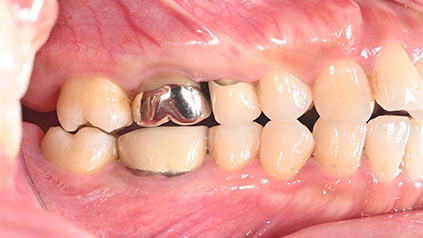
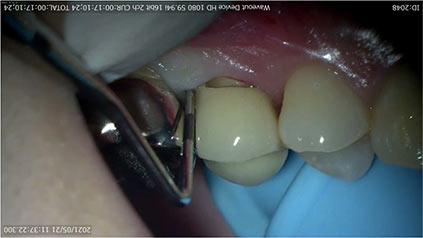
Female in her 30s. She had discomfort in her upper right tooth. After a thorough examination under a microscope, a fracture was found in the fifth tooth on the upper right, which required extraction.
Before treatment

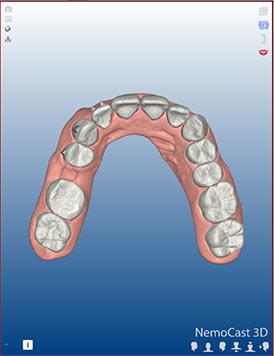
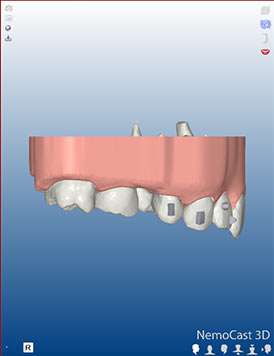
This is a pre-treatment simulation. It was decided that orthodontic treatment was necessary because the bite would not work well with just extracting the tooth and making a crown.
After analyzing the scan data, CT data, and facial photo data together, we created a mouthpiece by applying a printer in the clinic.
(In-house aligner)
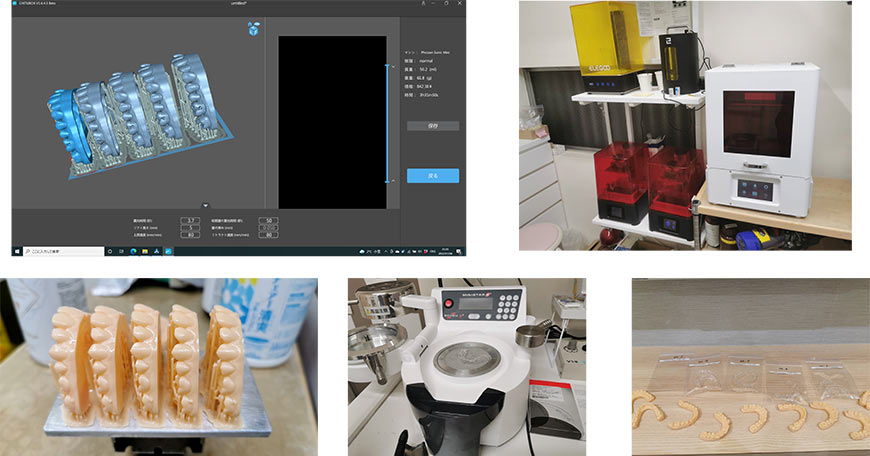
In-house work: 3D printer, vacuum-pressurized press machine, etc. to create a precise mouthpiece. (Inhouse aligner)
After treatment
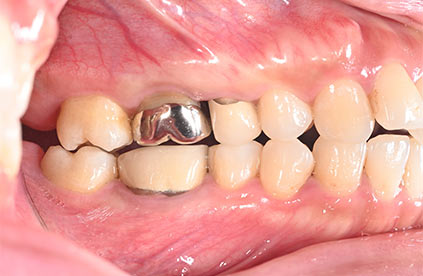

After aligner orthodontic treatment (In-House Aligner) Ceramic was placed in the upper right.
You can see the improvement of the bite relationship.
CASE 5
A case of full-arch orthodontic treatment (rubber metal) to improve level 2 without extraction.
Before treatment

Male in his 20s. He came to our clinic with a chief complaint of protruding teeth and crowded teeth. Normally, the orthodontic treatment would require extraction of teeth (usually 2 years or more), but we used a special material called “rubber metal” and completed the treatment in 1 year without extraction of teeth.
After treatment
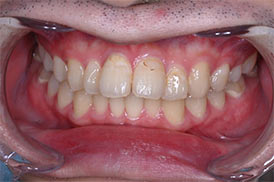
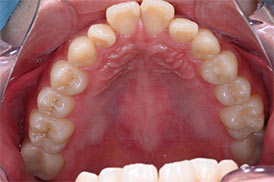
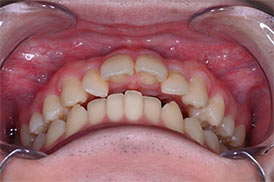
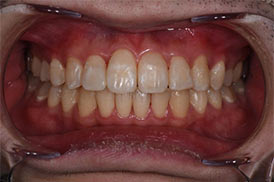
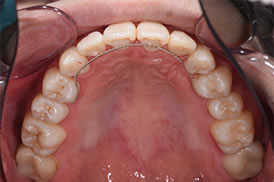
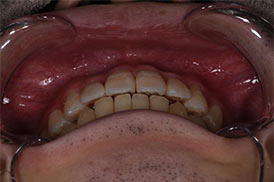
Using rubber metal, the back teeth were moved in one lump sum, which made it possible to create a stable bite quickly.
The sense of protrusion of the front teeth has also been greatly improved.
CASE 6
A case of full-arch orthodontic treatment (upper: in house, lower: rubber metal) to improve the crowding of the teeth without extraction.
Before treatment

Male in his 20s. He came to our clinic with the main complaints of median malocclusion (gap in the middle of the front teeth) and crowding.
In order to shorten the treatment time, he used rubber-metal braces for the crowding and inhouse aligners (hybrid braces) for the upper jaw.
The patient’s braces were removed after 4 months due to his efforts.
During orthodontic treatment
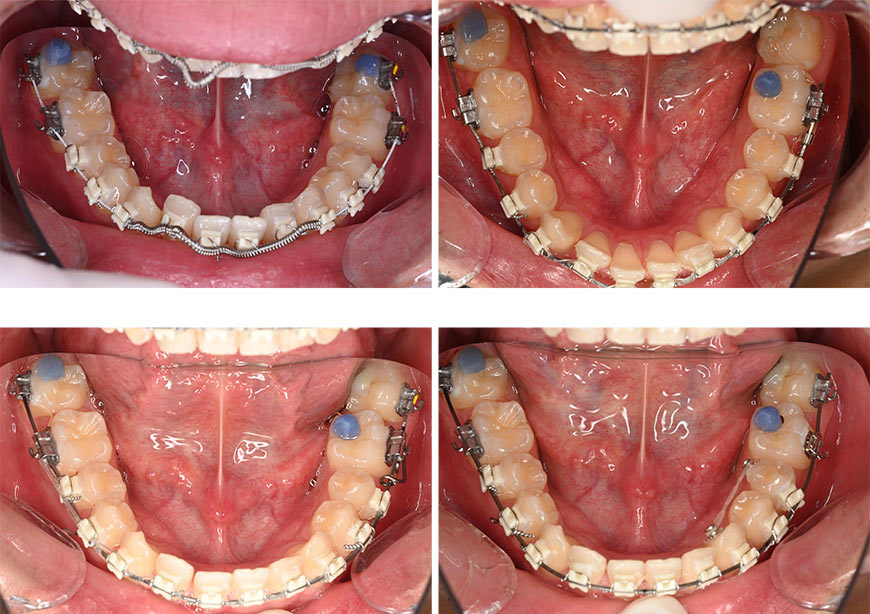
After treatment


CASE 7
A case of full-maxillary prosthodontic treatment using an intraoral scanner (approach to an elderly patient)
Before treatment
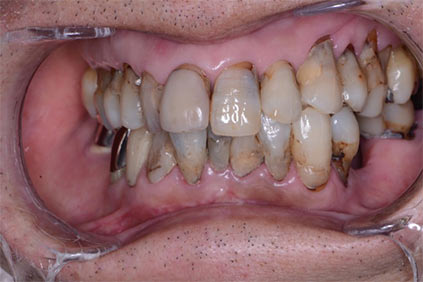
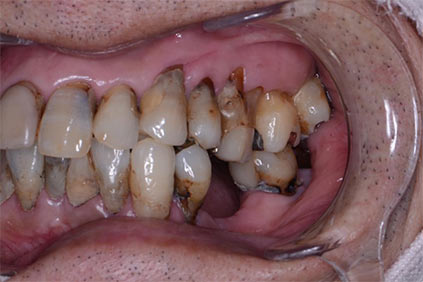
A man in his 70’s. He had a history of esophageal cancer surgery. He had a history of esophageal cancer surgery and his throat had become weak, making dental treatment difficult.
He had cavities in all of his teeth, but they had not been treated and the holes had only been filled.
During treatment

We proceeded with treatment block by block. Rubber dam is used during the treatment to prevent throat irritation.
All treatment was performed under a microscope. (The image is a captured image from the video taken from the microscope.)
During treatment
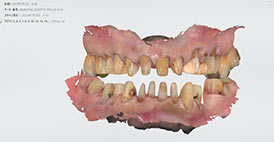
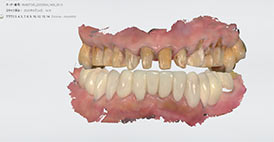
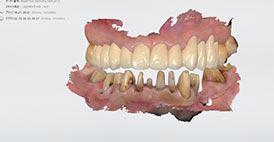
Since it was impossible to take a normal mold, an optical impression was made using an intraoral scanner, and a ceramic tooth was fabricated.
The information from the temporary teeth was also sent to the laboratory to be used as a reference for the final crown.
After treatment
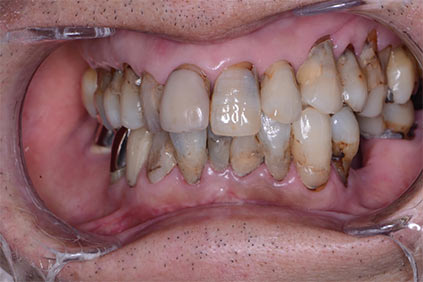
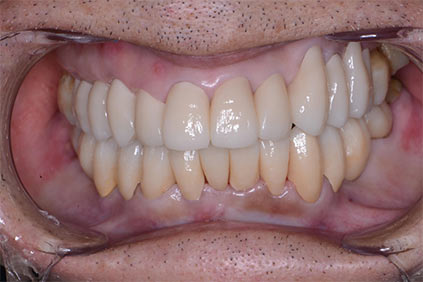
This is the final ceramic. We were able to complete the treatment by minimizing the physical burden during the treatment.
CASE 8
A case of prosthetic treatment using an intraoral scanner (approach to an elderly patient)
Before treatment

Male in his 90s. He reported that his lower front teeth were wobbling. The teeth were shaking due to bone dissolution caused by periodontal disease.
Because of the risk of aspiration during treatment due to his advanced age, we proceeded with treatment using a digital device.
During treatment

An optical impression was made using an intraoral scanner, the tooth was extracted based on the data, and a temporary tooth was created in advance.
After treatment
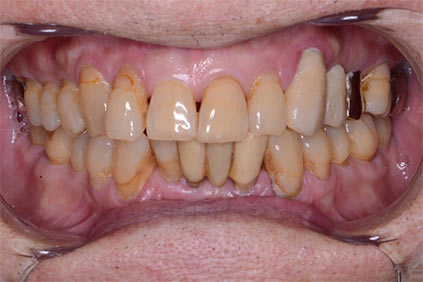

The final ceramic tooth was placed. Even elderly patients can undergo the treatment with ease.
